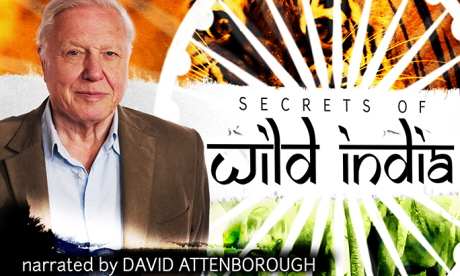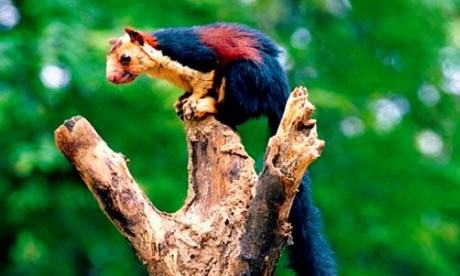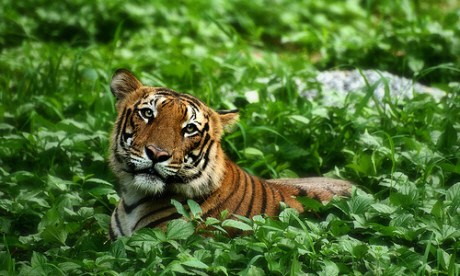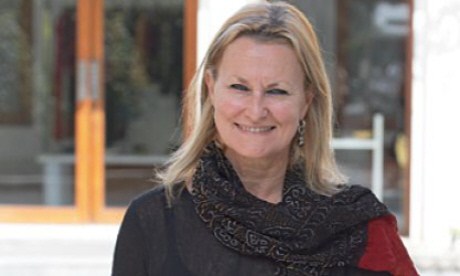
Leading wildlife filmmaker Harry Marshall talks about his new series that reveals India's little known wildlife treasures
Narrated by Sir David Attenborough, The Secrets of Wild India, airs Mondays at 8pm on Nat Geo Wild UK. It takes viewers from the jungles of Assam to the deserts of Gujarat, charting the plight of India's surprisingly diverse wildlife.
Peter Moore talked to the founder and creative director of Icon Films (the production company behind the new programme), Harry Marshall, about the challenges facing India and its wildlife. And the challenges he faced filming them.
What was your involvement with Secrets of Wild India
I had the fun job – coming up with and selling the broad idea of the structure of the series. Three films on three iconic Indian locations. One on jungles, one on deserts and one on the rivers and plains. I went out on various recce trips with the series director Duncan Chard and introduced him to the wonderful Indian camera and field team.
You have a personal connection with India. Is India still a special place for you?
I was born in India and have a long family connection with the country. I grew up in the south and went to school there until I was 12, when I came to England. So India really is home in so many ways and where I have many dear friends. It’s also where I have had most of my most memorable and most alarming adventures. It can be the best and the worst of places but it is never boring. It will always surprise you with another way of solving a problem, another level of generosity or stoicism or just another way of seeing the world.
How often do you get back to India and the Himalayas?
I go to India several times a year. I need very little excuse to go back I haven't been to the Himalayas for some time and am suffering withdrawal symptoms. The last time I spent a long period there was to film snow leopards in Ladakh. It was minus 40 and my Indian cameraman Alphonse – who is from Chennai – told me that God would punish me for bringing a Dravidian to such a place. Chennai has three seasons. Hot. Hotter. Hottest. He had icicles on his moustache and stole my ugg boots.
I read that your father taught you how to catch elephants using binoculars, tweezers and a jam jar. Is that a skill you still have? Care to share how it's done?
You look at the elephants through the wrong end of the binoculars, pick them up with the tweezers and put them in the jam jar. It’s actually exactly the same principle behind making natural history documentaries.
You set up Icon Films 21 years ago. What kind of programmes does Icon make? Do you have a particular philosophy?
We make all sorts of programmes in addition to the natural history that we are probably best known for. We make travel and adventure films, history programmes, science and observational documentaries. My philosophy is to never give up. There is no such thing as a bad idea you just have to wait for the right moment.
In some of your programmes, like Beast Hunter and River Monsters, the presenters get very 'hands-on' with the wildlife. Is this just to 'sex-up' the programmes? Or do you think it helps the viewer get 'up close and personal' with animals and understand them a bit better?
Presenters are important in a certain sort of programme. They act as the bridge for the audience and make the experience more real. Presenters can ensure credibility and help the audiences trust you.
For instance, Jeremy Wade (who hosts our River Monsters series) is a man of real integrity and this shines through. So people believe him and they know what we are doing is real. So if he says he is being circled by a hungry bear in his tent in the woods, people don’t think there is a man in a bear costume running around and that Jeremy is being chauffeured to a Best Western Hotel every evening. Of course not all presenters are like that.....
What Icon programmes are you proudest of?
We put our name to them all and I am proud of them all. I am especially proud of River Monsters because it’s such a team achievement and they are so tough to produce. Nothing is faked. And I am very proud of the environmental films we have made in India especially - like Crocodile Blues and A Million Snake Bites - two films we made with the amazing Romulus Whitaker – the world authority on Indian reptiles who I met when I was five. They were not easy films to get commissioned. Extinction and snakes don’t rate well and we had to fund “Crocodile Blues” ourselves to get it made - but both told a very important story which absolutely mattered.
Icon's first programme was Queen of the Elephants, made in 1992. It was set in India too. How has the situation for wildlife in India changed over the decades?
There are so many more people in India now than there were in 1992. The pressure of the human population and all that this entails, is the biggest threat to India’s last wild places.
What do you think will surprise people most about this new series,>Secrets of Wild India?
That despite 1.2 billion people India still has so much of its wildlife and so many unique habitats to support them all. In the West we killed off our dangerous animals centuries ago. In India people live alongside tigers and elephants and King Cobras. That is amazing.
What is the relationship between Indians and their wildlife? Where/what are the pressure points?
Hinduism preaches ahimsa – non-violence. As my friend Dr Ash Pawade says, ahimsa was really big with the Buddha and Mahatma Gandhi and provided an early environmental code that at best still works. The pressure points are where human vested interests and the needs of wildlife come into conflict. Ahimsa is a washer to reduce the friction - but it is not a solution.
What are the 'secrets' of Wild India?
I could not possibly say. You will have to watch the programmes!
Where are the best places to see wildlife in India?
Depends what you want to see. The ONLY place to see Asiatic Lions is Sasan Gir in Gujarat. If you want to see frogs and other herps, go to the Western Ghats. For birds I would recommend Anaimalai and Indira Gandhi National Park. For tigers it’s hard to beat Bandhavgarh. Seeing a tiger up on the fort is one of the great experiences of life.
Three top tips for people travelling to India to see wildlife?
Expect to get up early.
Use sunscreen and take a hat.
Be quiet.
Finally, what's next for you and Icon Films?
I would like to film in Burma.
 The Secrets of Wild India is produced by Icon Films and airs Mondays at 8pm on Nat Geo Wild UK. For more details visit the series official website.
The Secrets of Wild India is produced by Icon Films and airs Mondays at 8pm on Nat Geo Wild UK. For more details visit the series official website.
 Harji Singh's Secret India
Harji Singh's Secret India
The co-founder of TransIndus lets slip about the 'next' Varanasi and a hidden Indian wildlife gem More
 Tracking tigers on foot in India
Tracking tigers on foot in India
Tracking tigers on foot is a thrilling new twist on the usual Indian safari – whether or not you actually see stripes More
 Christine Manfield: Tasting India
Christine Manfield: Tasting India
Christine Manfield has created the definitive book on Indian cooking. She tells Peter Moore about her amazing journey through the food of India More